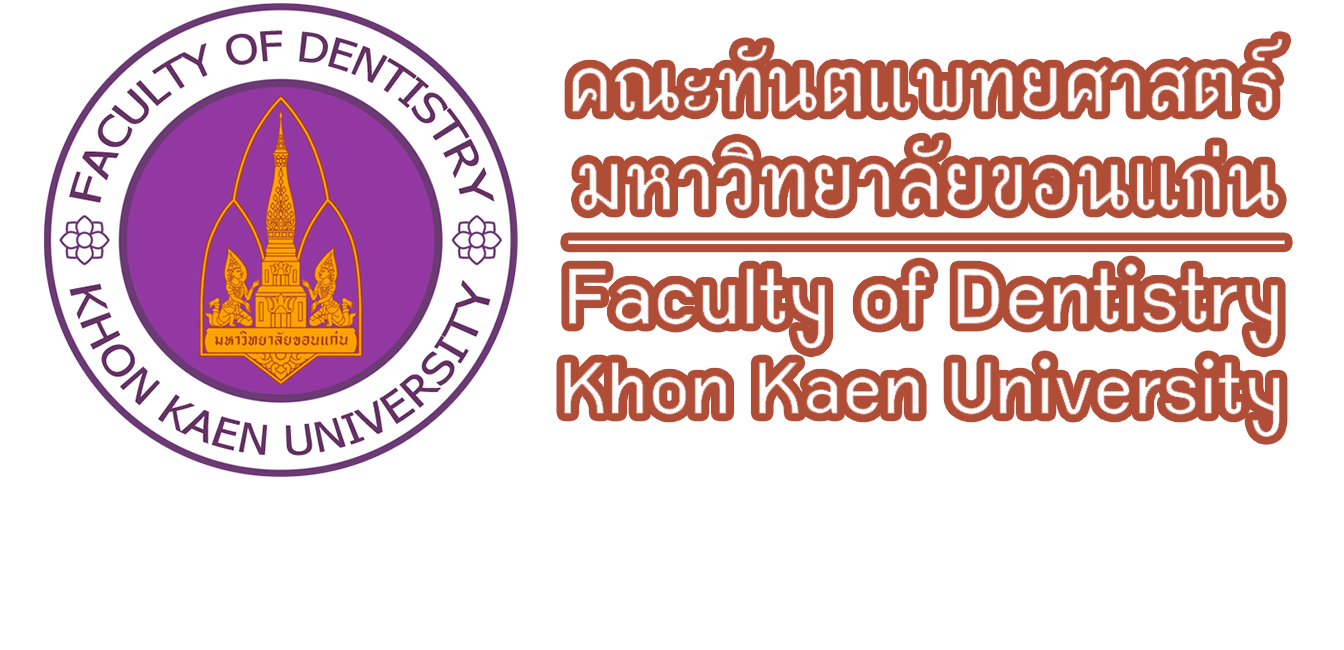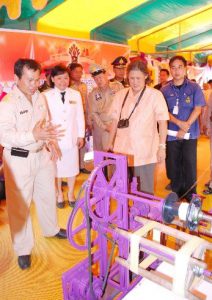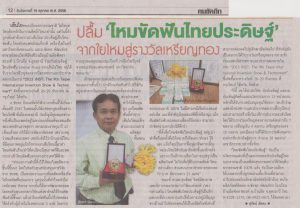
INTRODUCTION
Biofilms are surface-attached microbial communities found ubiquitously in almost any kind of environment. They are medically important since over 80% of microbial infections in the body are caused by bacteria growing as a biofilm. Examples include the layer of Pseudomonas aeruginosa that forms in the trachea of cystic fibrosis patients, Escherichia coli bacterial biofilm that forms in urinary tract and intestinal infections, Staphylococcus sp. infections from biofilms on indwelling catheters, and eye infections from biofilms that form on contact lenses. In the oral cavity, microbial biofilms, commonly referred to as dental plaque, are involved in the pathogenesis of caries, periodontitis, dental implant failures, denture stomatitis and oral yeast infections such as candidiasis. Biofilms that form in the water lines of dental operatories are also an important public health concern as a potential vector for infection, particularly to patients with depressed immune systems. Moreover, biofilm bacteria can cause a range of problems to industrial processes including reduced heat-cold transfer, clogging water pipelines, food spoilage and they may cause infections among consumers.
Bacteria within biofilms have an inherent increased (up to 1000-fold higher) resistance to antimicrobial compounds, even though these same bacteria are sensitive to these agents if grown under planktonic conditions. In addition, biofilms increase the opportunity for gene transfer between/among bacteria. This is important since bacteria resistant to antimicrobials or chemical biocides can transfer the genes for resistance to neighboring susceptible bacteria. Gene transfer can convert a previous a virulent commensal organism into a highly virulent pathogen.
Background
Biofilm Research Group (BRG) is established in 2011 by a group of clinicians, microbiologists, pharmacologists, toxicologists and veterinarians from faculties in the Khon Kaen University who share the same vision. We nurture young researchers and share our experience by recruiting and mentoring undergraduate and postgraduate students. Together with collaborators from other outstanding organizations, Biofilm Research Group attempts to take responsibility to conduct applicable researches on various aspects including detection techniques, pathogenesis, laboratory diagnosis, prevention, control or treatment of biofilm-associated diseases.
Vision
Excellence in interdisciplinary research and development of detection innovations/ products for prevention, control or treatment of biofilm-associated diseases.
Mission
- Development of products and innovations for detection, prevention, control or treatment of biofilm-associated diseases that are accessible by communities
- Funding for postgraduate students who are interested in biofilm research
- Establishing research network with other institutes that value similar vision
- Sharing our knowledge via publications, nationally and internationally
CURRENT RESEARCH PROJECT/RESEARCH INTEREST
- Effect of antimicrobial peptides alone and in combination with antibiotic against biofilm matrix composition of bacteria
- Role of extracellular DNA in adhesion, biofilm formation and drug susceptibility of bacteria
- Development of method for control of dental caries and dental plaque formation
- Antimicrobial effects of essential oils against biofilm bacteria
- Influence of Physicochemical Factors on Formation and Chemical Composition of Extracellular Polymeric Substances of Burkholderia pseudomallei
- Effects of goat placenta extracts on sonicated extracts of Porphyromonas gingivalis-treated human gingival fibroblasts and their anti-inflammatory activities in vitro
- The clinical effect of concentrated growth factor injection for interdental papilla increasing in post-orthodontics patient
COLLABORATION
- Academic Centre for Dentistry, Amsterdam, University of Amsterdam and VU Universiteit Amsterdam, 1081 BT Amsterdam, The Netherlands
- College of Life and Environmental Sciences, Biosciences; University of Exeter, Stocker Road, Exeter, EX4 4QD Devon, United Kingdom
- Faculty of Dentistry, University of Strasbourg, Strasbourg, France.
- University College London (UCL) Eastman Dental Institute and Hospital, London, UK.
- Melioidosis Research Center, Faculty of Medicine, Khon Kaen University, Khon Kaen
- Center for Research and Development of Herbal Health Products, Khon Kaen University, Khon Kaen
- Protein and Proteomics Research Center for Commercial and Industrial Purposes, Faculty of Science, Khon Kaen University, Khon Kaen
- Department of Microbiology, Faculty of Science, Mahidol University, Bangkok
- Department of Biochemistry, Faculty of Science, Mahidol University, Bangkok
- JSSU Mysore India
- Vinayaka Mission’s Research Foundation (Deemed to be University) Salem – 636308 Tamil Nadu India
- Department of Microbiology, Faculty of Medicine and Melioidosis Research Center, Khon Kaen University, Khon Kaen
- Department of Biochemistry, Faculty of Medicine and Melioidosis Research Center, Khon Kaen University, Khon Kaen
- Department of Environmental Science, Faculty of Science, Khon Kaen University, Khon Kaen
- Faculty of Pharmaceutical Sciences, Khon Kaen University, Khon Kaen
- Faculty of Veterinary Medicine, Khon Kaen University, Khon Kaen
SELECTED PUBLICATION
- Lachica MRCT, Anutrakunchai C, Prajaneh S, Nazmi K, Bolscher JGM, Taweechaisupapong S. Synergistic effects of LFchimera and antibiotic against planktonic and biofilm form of Aggregatibacter actinomycetemcomitans. PLoS One. 2019 Jul 22;14(7):e0217205. doi: 10.1371/journal.pone.0217205. eCollection 2019.
- Pakkulnan R, Anutrakunchai C, Kanthawong S, Taweechaisupapong S, Chareonsudjai P, Chareonsudjai S. Extracellular DNA facilitates bacterial adhesion during Burkholderia pseudomallei biofilm formation. PLoS One. 2019 Mar 11;14(3):e0213288. doi: 10.1371/journal.pone.0213288. eCollection 2019.
- Satthanakul P, Taweechaisupapong S, Luengpailin S, Watcharee Khunkitti W. The antifungal efficacy of essential oils in combination with chlorhexidine against Candida spp. Songklanakarin J. Sci. Technol. 2019; 41 (1): 144-150.
- Wongkaewkhiaw S, Taweechaisupapong S, Anutrakunchai C, Nazmi K, Bolscher JGM, Wongratanacheewin S, Kanthawong S. D-LL-31 in combination with ceftazidime synergistically enhances bactericidal activity and biofilm destruction in Burkholderia pseudomallei. Biofouling. 2019 Jul 8:1-12. doi: 10.1080/08927014.2019.1632835.
- Jearranaiprepame S, Jangpromma N, Khunkitti W. Anti-aging bioactivities of egg white hydrolysates. Songklanakarin J. Sci. Technol. 2019; 41 (4) : 924-933.
- Yarovaya L, Khunkitti W. Effect of grape seed extract as a sunscreen booster. Songklanakarin J. Sci. Technol. 2019; 41 (3) : 708-715.
- Laugel-Haushalter V, Morkmued S, Stoetzel C, Geoffroy V, Muller J, Boland A, Deleuze JF, Chennen K, Pitiphat W, Dollfus H, Niederreither K, Bloch-Zupan A, Pungchanchaikul P. Genetic Evidence Supporting the Role of the Calcium Channel, CACNA1S, in Tooth Cusp and Root Patterning. Front Physiol. 2018 Sep 26;9:1329. doi: 10.3389/fphys.2018.01329. eCollection 2018.
- Anutrakunchai C, Bolscher JGM, Krom BP, Kanthawong S, Chareonsudjai S, Taweechaisupapong S. Impact of nutritional stress on drug susceptibility and biofilm structures of Burkholderia pseudomallei and Burkholderia thailandensis grown in static and microfluidic systems. PLoS One. 2018 Mar 26;13(3):e0194946. doi: 10.1371/journal.pone.0194946. eCollection 2018.
- Poomanee W, Chaiyana W, Mueller M, Viernstein H, Khunkitti W, Leelapornpisid P. In-vitro investigation of anti-acne properties of Mangifera indica L. kernel extract and its mechanism of action against Propionibacterium acnes. Anaerobe. 2018 Aug;52:64-74. doi: 10.1016/j.anaerobe.2018.05.004.
- Kamjumphol W, Chareonsudjai P, Chareonsudjai S. Antibacterial activity of chitosan against Burkholderia pseudomallei. Microbiologyopen. 2018 Feb;7(1). doi: 10.1002/mbo3.534.
- Ruangcharoen S, Suwannarong W, Lachica MRCT, Bolscher JGM, Nazmi K, Khunkitti W, Taweechaisupapong S. Killing activity of LFchimera on periodontopathic bacteria and multispecies oral biofilm formation in vitro. World J Microbiol Biotechnol. 2017 Aug 19;33(9):167. doi: 10.1007/s11274-017-2334-2.
- Puknun A, Kanthawong S, Anutrakunchai C, Nazmi K, Tigchelaar W, Hoeben KA, Veerman EC, Bolscher JG, Taweechaisupapong S. Ultrastructural effects and antibiofilm activity of LFchimera against Burkholderia pseudomallei. World J Microbiol Biotechnol 2016; 32:33 DOI 10.1007/s11274-015-1988-x
- Kunyanee C, Kamjumphol W, Taweechaisupapong S, Kanthawong S, Wongwajana S, Wongratanacheewin S, Hahnvajanawong C, Chareonsudjai S. Burkholderia pseudomallei biofilm promotes adhesion, internalization and stimulates proinflammatory cytokines in human epithelial A549 cells. PLoS One. 2016 Aug 16;11(8):e0160741. doi: 10.1371/journal.pone.0160741. eCollection 2016.
- Anutrakunchai C, Hemsley C.M, Sermswan R.W, Titball R.W, Chareonsudjai S, Taweechaisupapong S. Role of RelA and SpoT in Burkholderia pseudomallei survival, biofilm formation and ceftazidime tolerance during nutritional stress. Trop Biomed 2016; 33 ( 4 ) : 786 – 798.
- Techawiwattanaboon T, Chareonsudjai S. A predicted cation transporter protein, BPSS1228, is involved in intracellular behaviour of Burkholderia pseudomallei in a human lung epithelial cell line (A549). FEMS Microbiol Lett. 2016 Dec;363(23). pii: fnw259. doi: 10.1093/femsle/fnw259.
Awards
- The 2014 Prathip Phantumvanit Outstanding Research Award
- The Colgate Research Award 2014 from the Dental Association of Thailand

- Gold Medal Award and Special Award from the 19th Taipei International Invention Show & Technomart (INST 2013) at Taipei, Taiwan
- Gold Medal Award from ITEX and Excelance Award from the Inventions Pot, Saudi Arabia at the 27th International Invention & Innovation Exhibition (ITEX’ 2016) at Kuala Lumpur, Malaysia
- Bronze price of Essential oils ear drop for canine otitis externafrom Soul International Invention Fair 2014 (SIIF 2014) Organized by Korea Invention Promotion Association in Soul, Korea November 28th – December 1st , 2014
- Bangkokbiznews (23 December 2014)

- The Lion Research Award from the Dental Association of Thailand

Petty patent of products
- Petty Patent No. 2141 Koi gel for periodontal disease treatment
- Petty Patent No. 8094 Essential oils ear drop for canine otitis externa
- Petty Patent No. 8522 Lemongrass oil denture-cleansing product
- Petty Patent No. 9866 Clove essential oils cream for treatment fungal skin infection in animals
- Petty Patent No. 9929 Lemongrass gel for prevention of Candida albicans adhesion on soft liner material
- Petty patent no. 11019 dental floss coating containing herbs with antimicrobial activities against oral pathogens.
- Petty Patent No. 12562 herbal antiseptic teat dip for prevention of mastitis. This innovation is invented for support the organic dairy farm as an alternative teat dip
Products
- Koi gel for periodontal disease treatment
- Lemongrass oil denture-cleansing product
- Lemongrass gel for prevention of Candida albicans adhesion on soft liner material
- Natural silk dental floss
- Essential oils ear drop for canine otitis externa
- Mastitis post-milking antiseptic teat dip
CONTACT ADDRESS
Biofilm Research Group, Faculty of Dentistry, Khon Kaen University
123 Mitraphab Road, Muang, Khon Kaen, 40002, Thailand.
Tel: (043) 202405 Ext 45125, 45126 Fax: (043) 202862
E-mail: suvi_taw@kku.ac.th



























